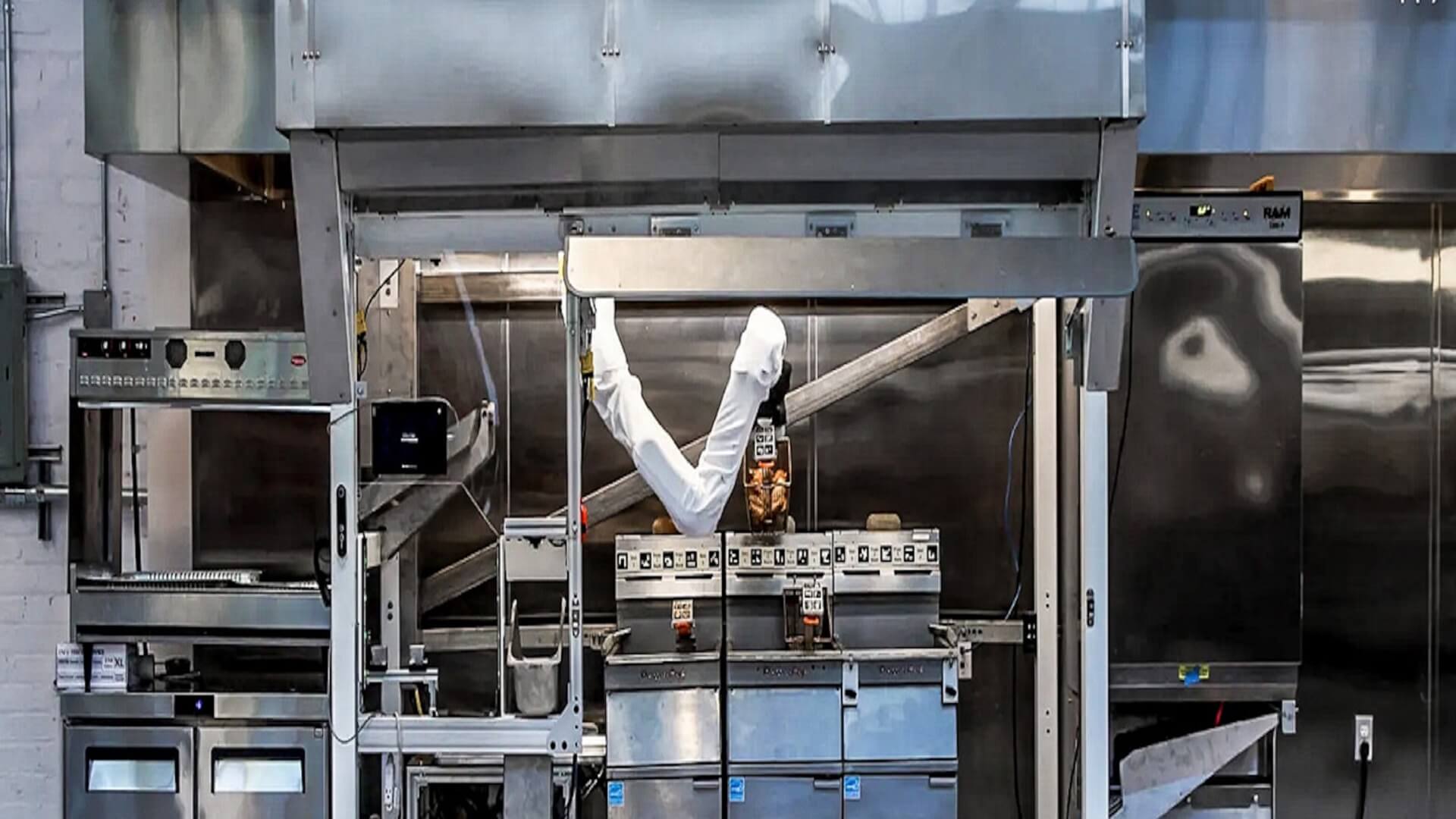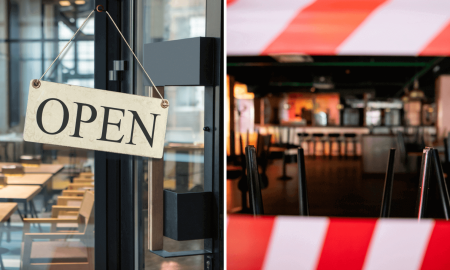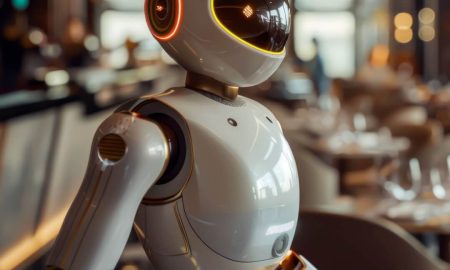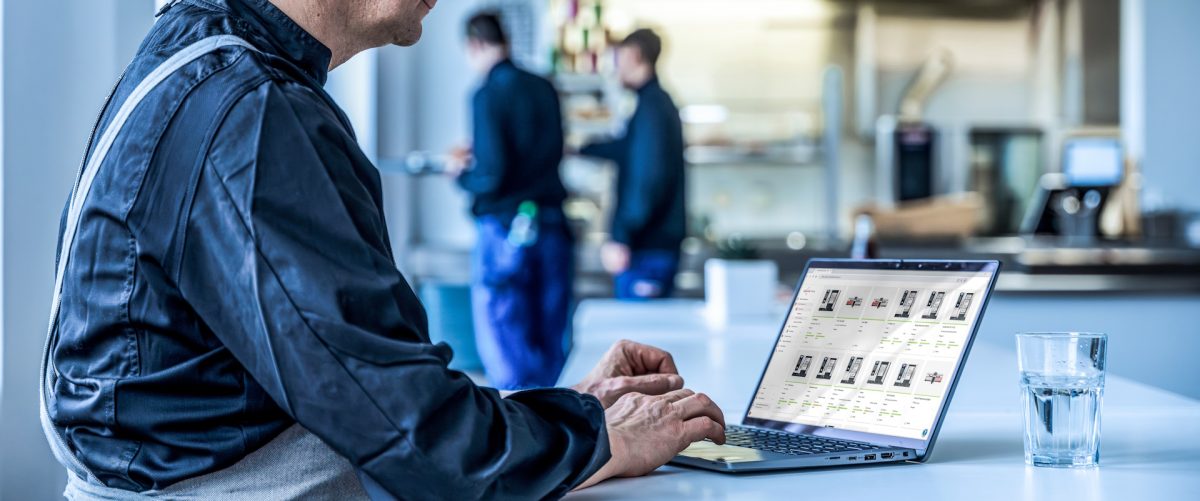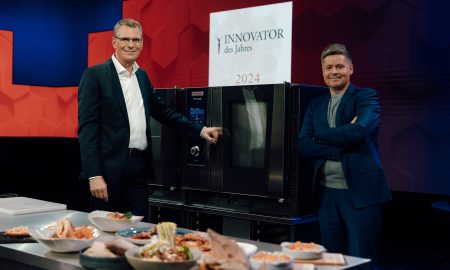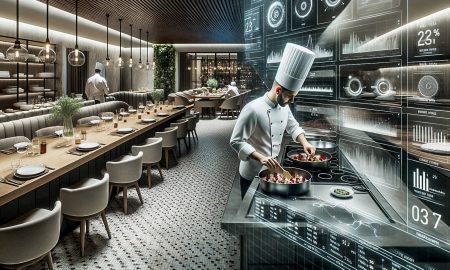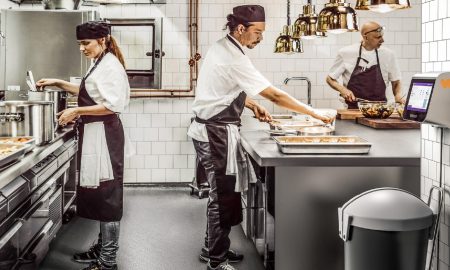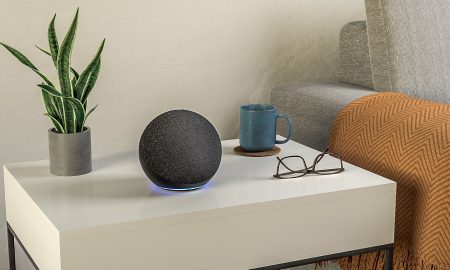Flippy is pretty good at it. The way it lifts the deep-frying basket out of the hot oil, shakes the sizzling chicken legs once and tilts them into the container with precision – lots of attention to detail, that requires practiced. Sure, a lot of employees in fast food restaurants around the world can do the same. However, Flippy is not a mere employee: It’s a robot. The restaurant is also not your run-of-the-mill fast food restaurant, but rather Cali Express in Pasadena, California. It is the world’s first fully automated burger restaurant – and has been causing quite a stir in the world of gastronomy since the beginning of 2023.
And for good reason: Few industries are more fertile ground for automation than the gastronomy sector. The shortage of skilled workers, which is forcing more and more restaurants to close or at least shorten their opening hours, is a harsh reminder of this: In gastronomy, work still requires people made of flesh and blood. Has the hour of the robot now arrived thanks to technological achievements such as Flippy? Are they the solution, these – well, yes – employees made of metal, nuts and bolts? What are the benefits for you? And what can’t they do?
Sieh dir diesen Beitrag auf Instagram an
Automation in the gastronomy industry: It’s not just about cooking
If you take Anthony Lomelino’s word for it, the answer is quite clear: Yes, they are better! “They don’t have sick days, they don’t come to work hungover – and they’re also a bit more reliable than humans,” said the Chief of Staff of the Californian company Pop ID recently on US television. Pop ID is a company that offers companies – including restaurants – biometric identity verification processes.
What this means in concrete terms is that, thanks to Pop ID, you can pay by face at Cali Express. No cash needed, or a card for that matter. Instead, you stand in front of a box that scans your face in an instant – and completes the transaction. In other words, you pay via Face ID, as you may already know from unlocking your smartphone, for example.
To do this, you naturally already need to have a payment profile, such as PayPal. However, once you have set it up, this payment system requires neither a card number nor passwords and certainly no TAN codes for any future payments. As for the burgers, they are prepared just as quickly and with no need for human involvement in the ordering and payment process. At least almost.
Automated restaurants and their robots: Efficiency and higher quality?
So as not to give the wrong impression: With robots, we don’t mean machines that look like humans. These are also known as “humanoid robots”. However, Flippy corresponds more to the scientific definition of a robot. In other words, an “apparatus that can perform certain functions of a human being.” After all, Flippy is actually just a long, wiry arm. However, thanks to artificial intelligence (AI), it knows exactly when to take fries or chicken out of the connected freezer compartment, at what temperature to put them in the fryer for how many minutes – and when to take them out again. In the automated kitchen, he can easily make up to 150 orders an hour.
But Flippy isn’t alone. There’s also another one on the scene. The robot that cooks the burger patty at Cali Express doesn’t even have an arm, and yet it fries up over 100 patties per hour. The machine called BurgerBot is a bit more 20th-century. At first glance, it looks like a pizza oven with adjustable plates that cooks the meat to perfection. The robot then places the patties in a container. And this is where a real – i.e. human – employee comes into play and places the patty between two slices of bun. It goes without saying that lettuce, tomato and cheese (if it is to be a cheeseburger) are also a must.
Flippy and BurgerBot thus ensure a burger that is a price-performance miracle even in burger wonderland California. Depending on the type, it costs no more than any other fast food burger in the area – but what makes it special is is that this patty is made from high-quality Wagyu meat. How is that possible? Well, the math seems simple: What the robots save you in money can be put into the quality of the food. But does this calculation really add up? And will we all be able to eat even better for even less money in the future – thanks to robots such as Flippy and BurgerBot?
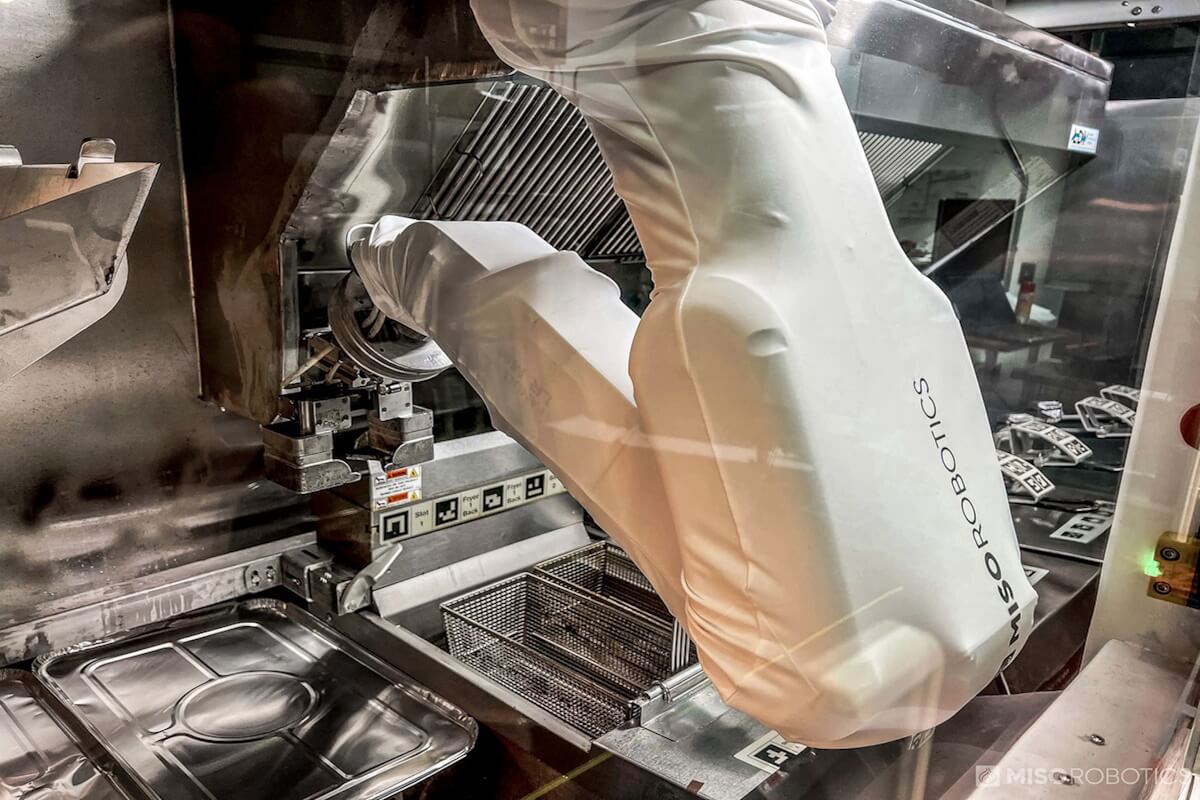
Image: Miso Robotics
Automated restaurant concepts cost money – but is it worth it?
How much a robot like Flippy ultimately costs depends on the different design models. It makes a difference whether Flippy should only deep-fry French fries or also onion rings and chicken – and if it needs to turn patties at the other station. Miso Robotics, the California-based tech company that has become a big player among restaurant robot providers with Flippy, offers its customers different payment models: From monthly leasing to various optimization services and one-time purchases – a Flippy is usually a very custom-made product.
It should take around six weeks to make Flippy for a restaurant customer. However, according to the American news channel CNBC, there is already a benchmark: It costs around 20,000 dollars to purchase a Flippy that is more or less ready to use and can deep-fry several products. Add to this installation costs of up to 10,000 dollars and monthly maintenance costs of up to 3,500 dollars.
According to the 2022 US Bureau of Labor Statistics the average salary of a fast-food restaurant employee in the USA was around 26,000 dollars per year, which adds up to around 2,170 dollars per month. With an investment of 30,000 dollars plus monthly costs of 3,500 dollars, some people may ask themselves the question: Does Flippy really make sense? “Deep-frying in particular is a very demanding job for employees,” says Mike Bell, CEO of Miso Robotics at CNBC. “It’s hot, it’s stressful, everything has to go fast.” A Flippy makes sense – not exclusively, but above all – in 24-hour restaurants, where it provides reliable work around the clock without the need for a duty roster or night shift. In this way, it does away with more than one full-time position. “We will see an increasing number of automated solutions in professional kitchens and restaurants over the next few years,” says Bell with conviction. “There’s no way around that.”
Sieh dir diesen Beitrag auf Instagram an
Part of the gastro-revolution?
And projections are right for Bell: According to the consultancy Aaron Allen & Associates, the cross-industry use of robots has tripled in the last 13 years alone. Compared to the automotive industry, for example, their use in the gastronomy sector was below the average for most other sectors. However, the main reason for this is that profit margins are comparatively low in the food service industry, meaning that investments can be made less frequently.
But over the past 30 years, robotic systems have become increasingly cheaper, by as much as 50 percent, according to Aaron Allen & Associates. Should robots like BurgerBot continue to become more affordable in the future, their place in the fast-food kitchens of the world is likely to be secure in the foreseeable future.
But whether robots like Flippy will be able to take on more demanding roles than frying and turning patties in restaurant or catering kitchens is (at least) still open to doubt. At the moment, it’s still the tedious and unpopular work that Flippy and co. are doing in the fast food sector. French fries in, French fries out, patty down, turn patty over, take patty off.
Sure, a market as large as fast-food restaurants and mono-concepts, where the same things can always be done on machines, will therefore change greatly in the years to come. And all in all for the better Real flesh-and-blood people no longer need to do what machines can do faster and maybe better anyway. And the quality of the food can be improved, as Cali Express’s Wagyu patty shows.
However, employees in the gastronomy sector gain more freedom and time for other important matters through the automation of certain tasks and the use of robots. They can now focus on tasks that cannot be done by robots, such as customer interaction, creativity, and finesse. And these skills will continue to be needed in the future, not only in upscale restaurant kitchens. Real hands can do a lot. And minds too. Especially trained chefs – made of flesh and blood.


